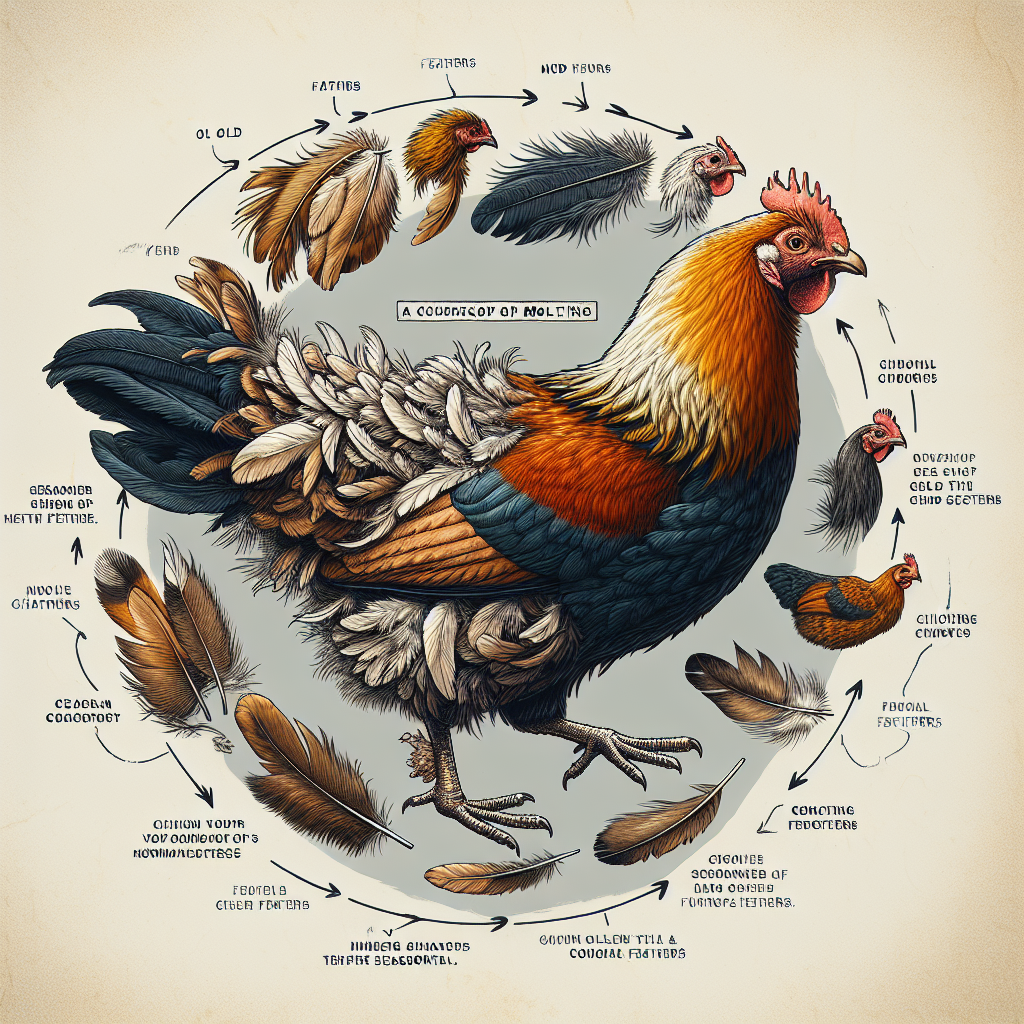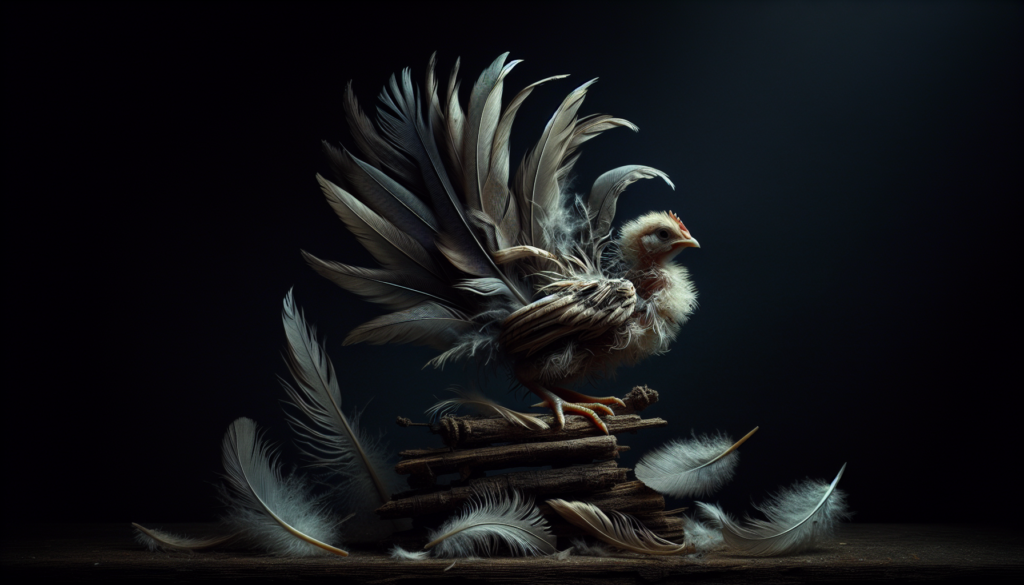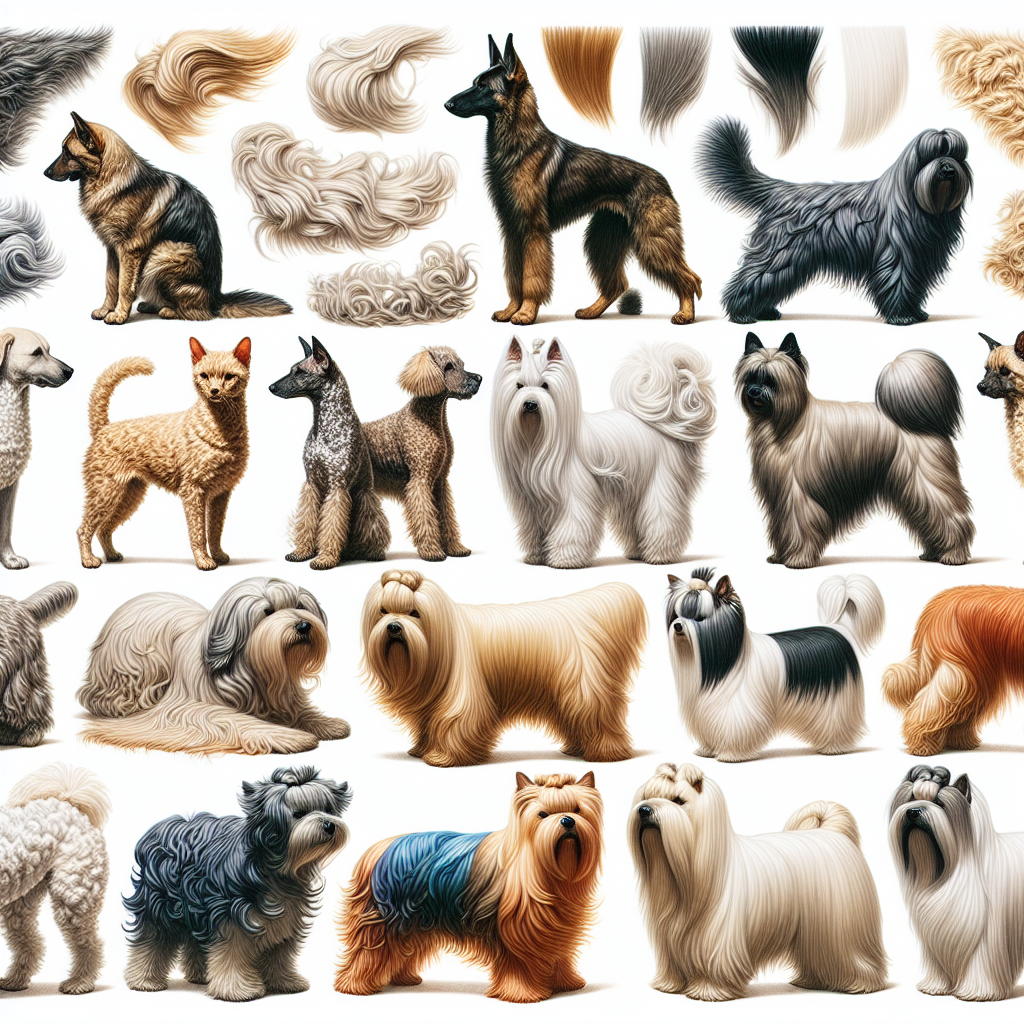Have you ever wondered about the fascinating relationship between seasonal changes and the molting cycle of chickens? As the seasons change, so do the feathers of these beloved birds, but what causes this transformation? In this article, we will unveil the intriguing ways in which seasonal changes impact the molting cycle of chickens, shedding light on the natural phenomenon that plays a significant role in the lives of these feathered friends. So, let’s embark on a journey of discovery and explore the connection between seasons and the transformative process of a chicken’s feathers.
Understanding the Molting Cycle of Chickens
What is molting?
Molting is a natural process in which chickens shed and replace their feathers. It is a necessary part of their growth and development, allowing them to maintain healthy and functional plumage. During molting, chickens gradually lose their old feathers and grow new ones, ensuring that they have a fresh set of feathers for insulation, protection, and flight.
Why do chickens molt?
Chickens molt for several reasons. Firstly, molting allows them to replace old, worn-out feathers, which may become damaged or lose their insulating properties over time. Additionally, molting is often triggered by seasonal changes in temperature and daylight duration, as chickens need to adapt to the environmental conditions in order to survive and thrive.
How long does the molting process typically last?
The molting process can vary in duration, depending on various factors such as breed, age, and individual health. On average, the molting process takes around 4 to 12 weeks to complete. During this time, chickens may experience reduced egg production or even temporarily cease laying altogether. It is important for chicken owners to be patient and provide the necessary care and support during the molting period.
Seasonal Influence on Chicken Molting
Effects of Temperature Changes
Temperature changes play a significant role in triggering the molting process in chickens. As the seasons transition from warmer to colder or vice versa, chickens sense the change in temperature and respond by initiating their molting cycle. This ensures that their new feathers are suited to the upcoming climate and provide optimal insulation.
Effect of Daylight Duration
Daylight duration also has a profound impact on chicken molting. Chickens rely on the natural rhythms of daylight to regulate their biological processes, including molting. As the days become shorter during the fall and winter months, chickens perceive this as a signal to molt. Conversely, the lengthening of daylight in spring and summer signals the end of molting and the resumption of normal feather growth.
Impact of Nutritional Changes
Nutrition plays a crucial role in supporting the molting process. As chickens divert their energy and resources towards feather growth during molting, they require adequate nutrients to sustain the new feather growth and maintain overall health. Nutritional deficiencies can prolong the molting process and negatively impact the quality of feathers, making it essential for chicken owners to provide a balanced and nutrient-rich diet during this period.
Temperature Changes and Molting
Chickens’ reaction to temperature variations
Chickens are highly sensitive to temperature variations and have evolved specific mechanisms to adapt to these changes. As the temperature drops, chickens experience physiological changes that trigger molting. The decrease in temperature serves as a signal for their bodies to shed old feathers and replace them with new ones that provide better insulation against the cold.
Relationship between temperature and molting
The relationship between temperature and molting is intricate. Warmer temperatures, especially during summer months, can delay or slow down the molting process in chickens. This is because chickens are more comfortable in warmer weather and do not feel the need for immediate feather replacement. On the other hand, colder temperatures expedite molting to ensure that chickens have feathers that effectively insulate them during the winter months.
Developmental stages affected by temperature
Temperature variations during molting can influence the various developmental stages of feather growth in chickens. Lower temperatures can accelerate the growth of new feathers, resulting in a faster molting process. Conversely, higher temperatures can prolong the molting cycle, delaying the growth of new feathers. Providing a consistent and optimal temperature environment can help ensure a smooth and timely molting process for your chickens.
Daylight Duration and Molting
The role of daylight in molting
Daylight duration plays a crucial role in regulating the molting cycle of chickens. Chickens possess photoreceptors in their eyes that are sensitive to changes in light intensity and duration. As the days shorten during the fall and winter months, the decrease in daylight triggers hormonal changes in chickens, initiating the molting process. The longer nights serve as a signal for chickens to allocate energy towards feather growth rather than egg production.
Effect of shorter days on molting
Shorter days signal to chickens that it is time to molt. As daylight duration decreases, chickens’ bodies perceive this as a change in season and respond by diverting energy and resources towards feather growth. The molting process typically begins shortly after the summer solstice in late June or early July and continues until the onset of winter. During this time, chickens may experience decreased egg production or stop laying altogether.
The influence of longer days on molting
Conversely, longer days indicate the end of the molting cycle and the resumption of normal feather growth. When daylight duration increases during the spring and summer months, chickens’ bodies interpret this as a signal to cease molting and redirect energy towards reproductive activities, such as egg production. Longer days stimulate the growth of new feathers and contribute to the overall health and vitality of the flock.
Nutritional Changes and Molting
The significance of nutrition during molting
Nutrition plays a crucial role in supporting the molting process in chickens. Feathers are composed of proteins, specifically keratin, which requires a sufficient supply of amino acids to grow and develop. During molting, chickens require an increased intake of high-quality protein to support feather growth and replacement. Offering a well-balanced diet during this period ensures that chickens have the necessary nutrients to replenish their feathers and maintain overall health.
Effect of limited food availability and molting
Limited food availability during molting can have adverse effects on the health and well-being of chickens. The molting process already places significant demands on their energy and nutrient reserves. If chickens do not have access to an adequate food supply during this time, their growth and feather regeneration may be compromised. This can lead to delayed molting, delayed feather regrowth, and a prolonged recovery period.
Ideal diet for chickens during the molting process
Providing an ideal diet during the molting process is essential for supporting feather regrowth and overall health. A high-quality poultry feed rich in essential nutrients, particularly proteins, is crucial to support the formation of new feathers. Additionally, supplementing their diet with sources of omega-3 fatty acids and vitamins can further enhance feather quality and promote optimal feather regrowth.
The Impact of Seasonal Changes on Molting Frequency
Influence of seasonal temperature variations on molting frequency
Seasonal temperature variations have a significant impact on the frequency of molting in chickens. As temperature shifts occur, such as transitioning from warm to cold or vice versa, chickens are more likely to enter a molting phase. This is especially true during the transition from summer to fall, as the drop in temperatures signals the need for chickens to molt and grow new feathers that provide better insulation against the cold.
Daylight duration and its effect on molting frequency
Changes in daylight duration also influence the frequency of molting in chickens. As daylight decreases during the fall and winter months, chickens perceive this as a seasonal change and undergo molting. The lengthening of daylight during the spring and summer signals the end of molting and the resumption of normal feather growth. These natural cues help regulate the frequency of molting in chickens throughout the year.
Effects of nutritional changes on molting frequency
Nutritional changes, particularly inadequate or imbalanced diets, can disrupt the molting cycle of chickens and impact the frequency of molting. Nutritional deficiencies may lead to delayed or irregular molting, affecting the timing of feather replacement. Conversely, a well-balanced diet that meets the nutritional needs of chickens can help ensure proper feather growth and a regular molting cycle.
The Role of Stress in Seasonal Molting
Stress-related molting triggers
Stress can play a significant role in triggering molting in chickens. Various factors, such as environmental changes, predator threats, or social disruptions within the flock, can induce stress in chickens. When chickens experience stress, it can disturb their hormone balance and lead to disruptions in their molting cycle. Identifying and mitigating potential stressors can help maintain a healthy molting process.
Effect of seasonal changes on stress levels
Seasonal changes can introduce additional stressors for chickens, which may impact their molting patterns. For example, abrupt temperature fluctuations or changes in lighting conditions can cause physiological stress, influencing the timing and duration of molting. It is important for chicken owners to create a stable and stress-free environment for their flock throughout the year to support a healthy molting cycle.
Mitigating stress during seasonal molt
To mitigate stress during the seasonal molt, providing a comfortable and consistent environment is crucial. Ensuring proper ventilation, maintaining optimal temperature conditions, and minimizing sudden changes in lighting can help reduce stress levels for chickens. Additionally, establishing a routine and avoiding unnecessary disturbances within the flock can contribute to a smoother and less stressful molting process.
Strategies for Managing Seasonal Molting
Providing consistent temperature conditions
Maintaining consistent temperature conditions is essential for managing the molting process effectively. Sudden temperature fluctuations can cause stress and disrupt the molting cycle. By providing a well-insulated coop and monitoring temperature levels, especially during colder months, chicken owners can create a stable and comfortable environment that supports optimal feather growth and timely molting.
Artificial lighting to regulate daylight duration
Artificial lighting can be used to regulate daylight duration and influence the molting cycle of chickens. Installing timers to ensure consistent lighting patterns can help maintain a regular molting schedule. During the fall and winter months, supplementing natural daylight with artificial light can mimic longer days and delay molting until the desired time. Similarly, reducing artificial lighting during the spring and summer months can signal the end of molting and stimulate normal feather growth.
Balanced nutrition to support molting process
A balanced and nutrient-rich diet is crucial for supporting the molting process in chickens. Providing a high-quality poultry feed that is specifically formulated for molting can ensure that chickens have access to the necessary nutrients for feather growth. Including ingredients rich in protein, vitamins, and minerals will promote healthy feather regrowth and help chickens recover more quickly from the stress of molting.
Best Practices for Chicken Owners
Monitoring environmental conditions
Chicken owners should regularly monitor and maintain optimal environmental conditions for their flock. This includes ensuring proper ventilation, controlling temperature fluctuations, and providing adequate lighting. Consistently monitoring these factors can help minimize stress and support a healthy molting process.
Ensuring proper nutrition during molting
Proper nutrition is crucial during the molting process. Providing a balanced diet that meets the specific nutrient requirements of molting chickens is essential for optimal feather regrowth and overall health. Consult with a poultry nutritionist or veterinarian to determine the best feeding strategy for your flock during molting and ensure that they receive the necessary nutrients to support this demanding process.
Creating a stress-free environment
Creating a stress-free environment is key to supporting a smooth and successful molting process. Minimize disturbances within the flock, ensure adequate space for each chicken, and provide enriching activities to keep them mentally and physically stimulated. Reduced stress levels will promote healthy feather regrowth, minimize disruptions to egg production, and contribute to the overall well-being of your flock.
Conclusion
Understanding the molting process of chickens and how it is influenced by seasonal changes is essential for every chicken owner. By recognizing the impact of temperature variations, daylight duration, and nutritional changes, as well as mitigating stress factors, you can effectively manage and support the molting process of your flock. Providing optimal environmental conditions, balanced nutrition, and a stress-free environment will contribute to healthy feather regrowth, improved overall health, and a successful molting cycle for your chickens.




